Test: Quadrilaterals- Case Based Type Questions- 2 - Class 9 MCQ
10 Questions MCQ Test Class 9: Additional Practice - Test: Quadrilaterals- Case Based Type Questions- 2
ABCD is an area in the shape of rhombus in which ∠ADC = 120°. Samay and Tarun lived at D and C and their school located at O.
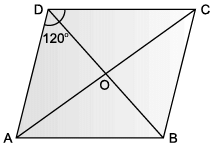
Q. Who can reach school early?

ABCD is an area in the shape of rhombus in which ∠ADC = 120°. Samay and Tarun lived at D and C and their school located at O.
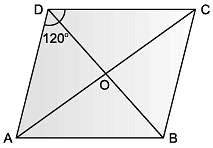
Q. Measure of ∠CDO and ∠DCO are ______ and ______ respectively.

ABCD is an area in the shape of rhombus in which ∠ADC = 120°. Samay and Tarun lived at D and C and their school located at O.
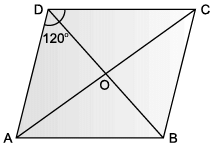
Q. Measure of ∠DCB is :

ABCD is an area in the shape of rhombus in which ∠ADC = 120°. Samay and Tarun lived at D and C and their school located at O.
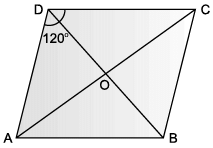
Q. Which statement is incorrect?
ABCD is an area in the shape of rhombus in which ∠ADC = 120°. Samay and Tarun lived at D and C and their school located at O.

Q. Measure of ∠BAC :
Maths teacher of class 9th gave students coloured paper in the shape of quadrilateral and then ask the students to make parallelogram from it by using paper folding.

Q. If S P = 3 cm, then RQ =
Maths teacher of class 9th gave students coloured paper in the shape of quadrilateral and then ask the students to make parallelogram from it by using paper folding.

Q. If ∠RSP = 30°, then ∠RQP =
Maths teacher of class 9th gave students coloured paper in the shape of quadrilateral and then ask the students to make parallelogram from it by using paper folding.
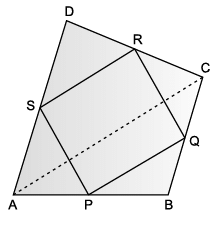
Q. How can a parallelogram be formed by using paper folding?
Maths teacher of class 9th gave students coloured paper in the shape of quadrilateral and then ask the students to make parallelogram from it by using paper folding.
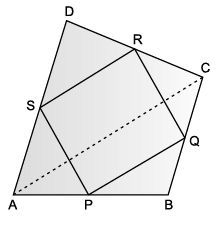
Q. If ∠RSP = 50°, then ∠SPQ =
Maths teacher of class 9th gave students coloured paper in the shape of quadrilateral and then ask the students to make parallelogram from it by using paper folding.

Q. Which statement is incorrect about the parallelogram?
|
4 docs|108 tests
|


















